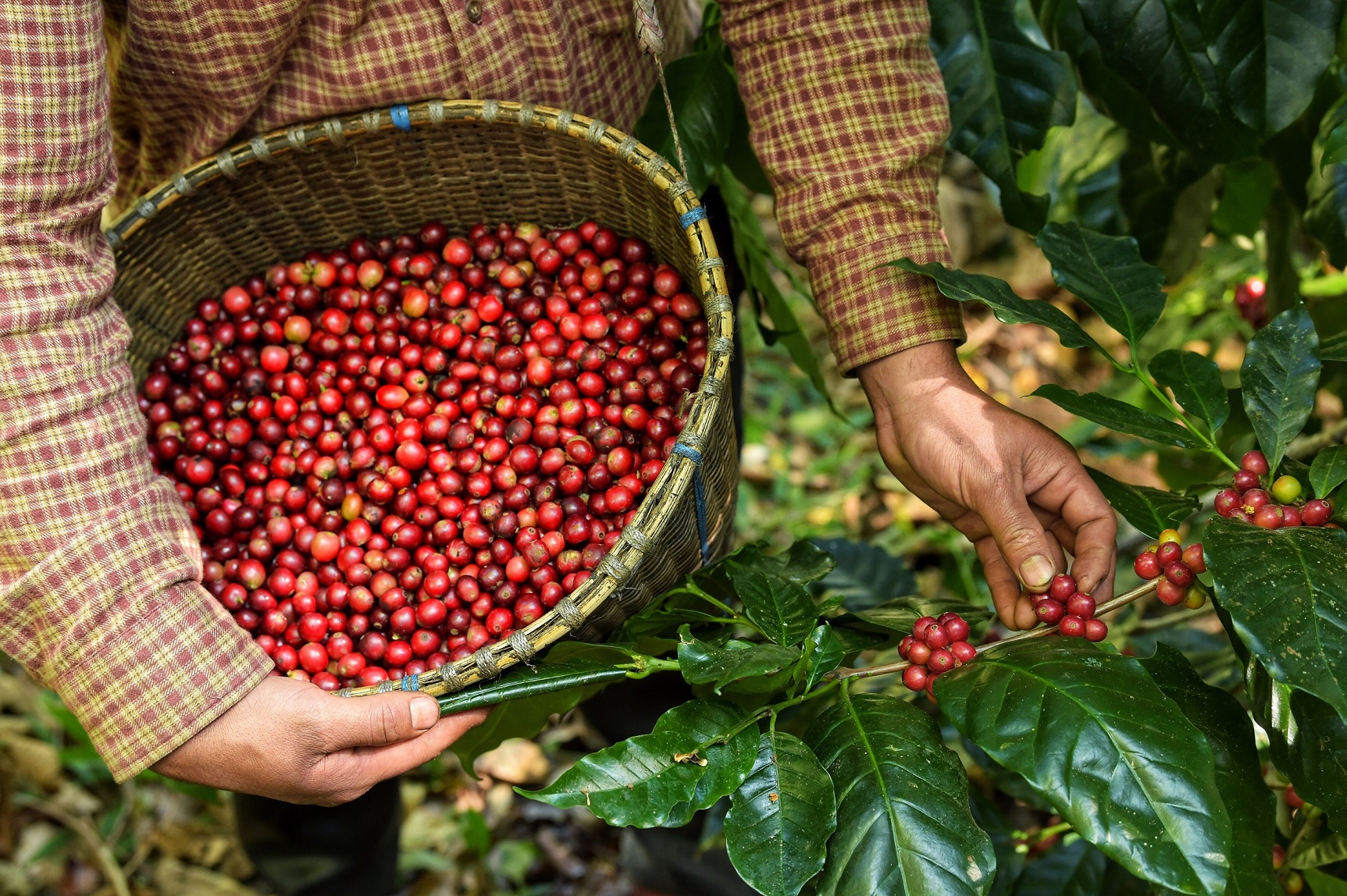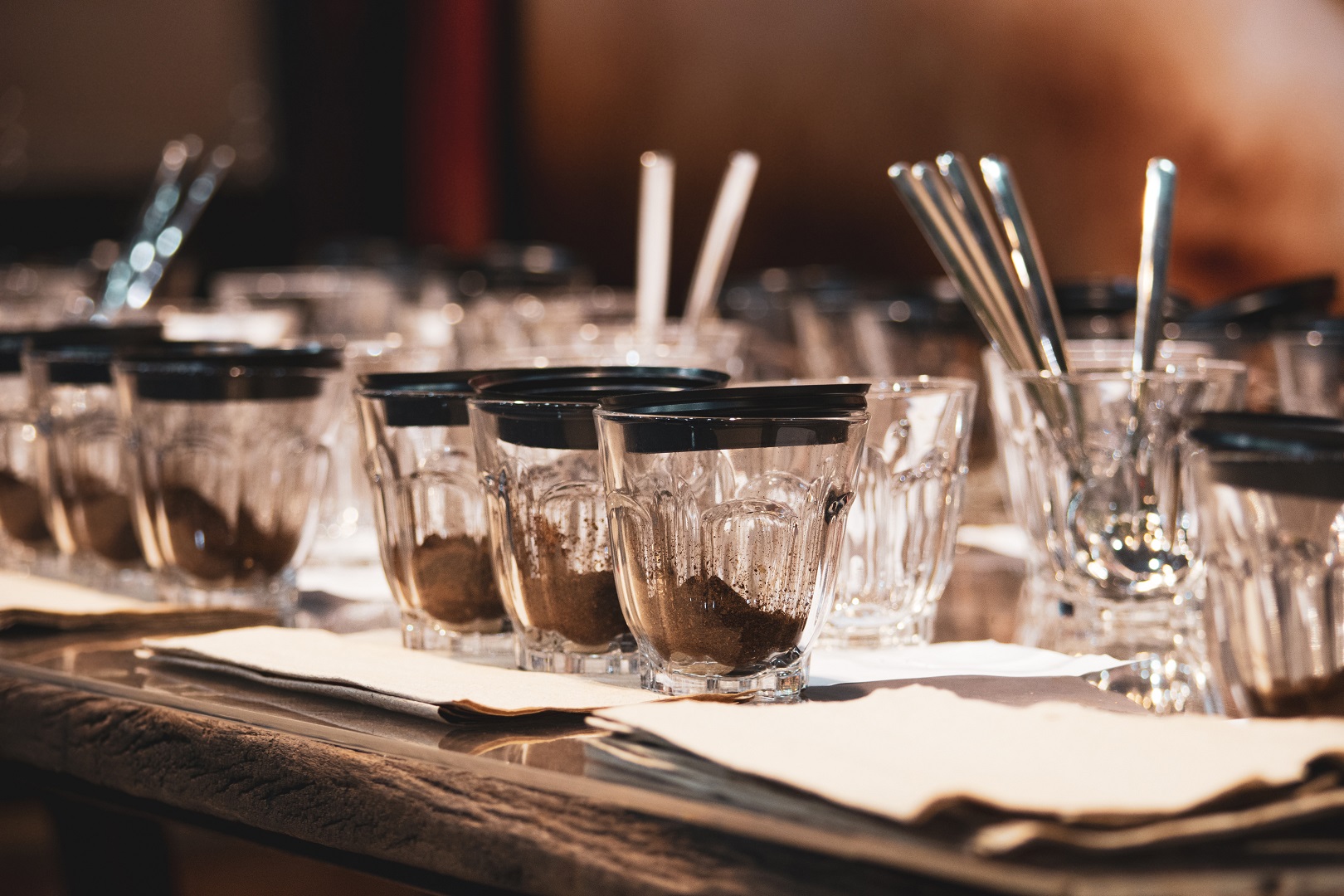The wording “specialty coffee” has appeared on the blog more than once. In many articles I wrote about such coffees, as well as I mentioned that in the Single Origin coffee roastery we use such beans and we offer them to our clients. However, no article has appeared so far that would be entirely and directly devoted to this topic. So: what is specialty coffee?
The short answer is that this is the highest quality coffee. However, this answer is too short to satisfy you and your eagerness for knowledge, dear Readers, as well as my willingness to share information with you on this topic.
Specialty coffee = highest quality
Specialty coffees are the professional term for the highest-quality coffees throughout the supply chain: from the farmer, through the supplier (e.g. a reputable broker of high-quality coffees), to the roaster where qualified roasters roast them. They are often referred to as “single origin” or “single estate”.
The former refers to one specific place where a given coffee is grown, e.g. the Yirgacheffe region in Ethiopia. The coffee, which is called Yirgacheffe, comes from this area, but not necessarily from one specific farm (this is due to the fact that coffee farms in Ethiopia are very small, have 1-1.5 ha, and the harvest of hundreds of individual farms is processed and segregated at local processing stations).
Single Origin & Single Estate
Anyway: single origin is a coffee that comes from a specific place on Earth (ergo: it is not a mixture of different beans). The Single Origin coffee roaster offer includes a lot of such coffee, for example the aforementioned Yirgacheffe coffee.
A less frequently used term is “single estate”. It means “single estate” / “single farm”. Single estate coffees are coffees that not only come from a known, specific place, but also from which plantation exactly. This term is used to describe coffees from larger farms, several dozen or more hectares, but also focused on the production of high-quality coffees.
An example of such coffee is the coffee offered by us from Nicaragua – Finca El Limoncillo. We can say that she comes from Nicaragua, from the Matagalpa region, and more precisely from the renowned El Limoncillo farm owned by the Mierisch family.
Where the “specialty” born
But let’s come back to the term “specialty”. It was first used in 1974 by Erna Knutsen in the Tea & Coffee Trade Journal. Knutsen used the term “specialty coffee” to describe the highest quality coffees, growing in specific microclimates, which have unique aroma and taste notes, so different from those found in industrial coffees. In those days, coffee was just coffee, nothing special was found in it. It was treated like an ordinary everyday product.
It turned out, however, that coffee grown in very good climatic conditions and treated with due care can have a whole range of fantastic flavors and aromas. Just like wine. Since then, from the mid-1970s, coffee began to “jump” to a higher level, both in production and in the perception of consumers: from a completely ordinary product (like a not very sophisticated table wine), it has become, or at least part of its world production. has become a kind of luxury product – specialty coffee.
Whether a coffee qualifies for the specialty segment is determined by the SCA score. SCA is the Specialty Coffee Association. SCA, in turn, is a union of SCAA and SCAE, which are the industry specialty coffee associations of America (SCAA) and Europe (SCAE). The above abbreviations may complicate the view of the matter for people who are not experts in the subject, so it can be briefly written that whether a given coffee is specialty or not, it is decided by the trade association of growers, producers and sellers of high-quality coffee.
Specialty coffee grades
Specialty coffees (like all other coffees) are tested for quality, the quantity of defective beans in the sample, the quality of the water used on the plantation and the soil on which they grow, and finally the aromatic and taste parameters. These tests are carried out by the so-called Q-graders, i.e. coffee sommeliers or tippers. Q-graders, in turn, must have the appropriate knowledge and experience, certified, of course, by the SCA certificate.
Each coffee can score a maximum of 100 points in such a study. In fact, getting more than 95 is very, very rare. Specialty coffees are those which score at least 80 points out of 100. The precise definition of the quality of such coffees is as follows:
- 80 – 84,99 points – very good
- 85 – 89,99 points – excellent
- 90 – 100 punktów – outstanding
The difference between specialty and common coffee
What is the difference between specialty coffee and “regular” coffee from the store? For example, regular coffee will never score 80 points on the SCA scale – and these points are followed by a lot of factors that affect its taste and quality. Starting from the climatic conditions (high quality of water used for growing and processing specialty coffees), through the quality control of beans (the maximum amount of defective beans in a batch of specialty coffee is 1 – 1.5%, and in the case of a large European producer of ground coffee – attention, a shocking curiosity. – that’s 30%), right up to fresh firing in traditional cast iron drum kilns, not turbo firing in huge heat pipes.
Specialty coffees are fresh coffees from the last available harvest. “Store” coffees are coffees that could have been harvested 3-4 years ago and have been stored in factories of large producers. Specialty coffees also include freshly roasted coffees, no more than 4-6 weeks after roasting. Large companies for coffee beans have a 2-year expiry date and often in stores you can find coffee from well-known Italian companies, for considerable money, which still has six months until the expiry date. Of course, an average Polish household will consume 1 kg of coffee for six months, but it also means that such coffee was roasted 1.5 years earlier.
Specialty coffees also include coffees that are enjoyed by the whole world. For many people, coffee is just coffee. This is the taste of ordinary industrial coffee. Sometimes it is better, sometimes it is worse, but it is difficult to find the fantastic aromatic and flavor notes of specialty coffees.
And there are plenty of them: from classic nut and chocolate coffee, often found in coffees from Central and South America, through citrus-floral flavors of African Arabica, to slightly forest and earthy coffees from Southeast Asia. And this is just a small example of how specialty coffees can taste. At the Single Origin roaster we currently have (but unfortunately it is about to end) a phenomenal controlled fermentation coffee from the Brazilian grower Pedro Bras, which smells like fruit marmalade and tastes both fruit and a hint of whiskey or cognac. This is what specialty coffees are like.
Why specialty coffee is so popular?
In the last dozen or so years, a significant increase in specialty coffees can be noticed. This is due to the so-called The “third coffee wave” that we are currently experiencing (I have already written about it on coffees.guru).
The first wave of coffee took place after the Second World War and was due to the huge interest in instant coffee. This coffee was patented by Nestle (Nescafe coffee) just before the war. A moment later it became part of the food rations of American soldiers, who willingly exchanged it for other products with the inhabitants of Europe (known story: an American soldier exchanged several cans of instant coffee with Pablo Picasso for one of his paintings). After the war, many Europeans remembered this fantastic invention: just pour hot water and it’s ready. It was the first coffee wave.
The second coffee wave took place in late 1980s and early 1990s – and continues until today, parallel to the third wave. The second wave of coffee is the popularity of Starbucks or Costa Coffee, i.e. the possibility of buying coffee in a cardboard mug “on the road”. Even in the 1990s, coffee in a cardboard mug was an inseparable element of American yuppies, and this way of drinking coffee is popular until today.
Over the last dozen or so years, however, the approach to coffee has changed. What Erna Knutsen noticed in 1974 came out of the niche and began to appear in the mainstream. The third wave of coffee is the return to coffee from small plantations, roasted in small, local roasters, using traditional methods and respecting the quality of the product and the principles of the art of roasting coffee.
It is also coffee drunk in black, often brewed so-called with alternative methods, e.g. in dripp or Aeropress. The third coffee wave also means an increase in the popularity of cafes where you can drink such coffees. Both in the world and in Poland there are more and more places where the waiter or barista will not ask: “white or black coffee?”, But: “Costa Rica from Aeropress or Ethiopia from Chemex?”.
This is what specialty coffees are and the third wave of coffee, which results from their popularity. Specialty coffees are quality, care for the raw material and the entire process it goes through, as well as craftsmanship and brewing using various interesting methods.





